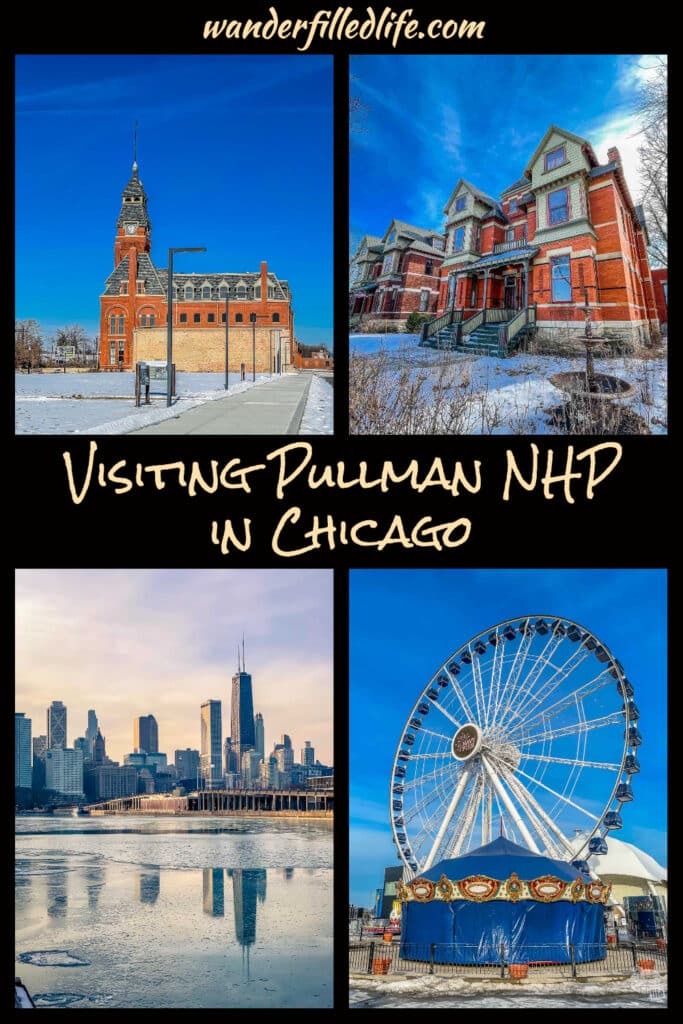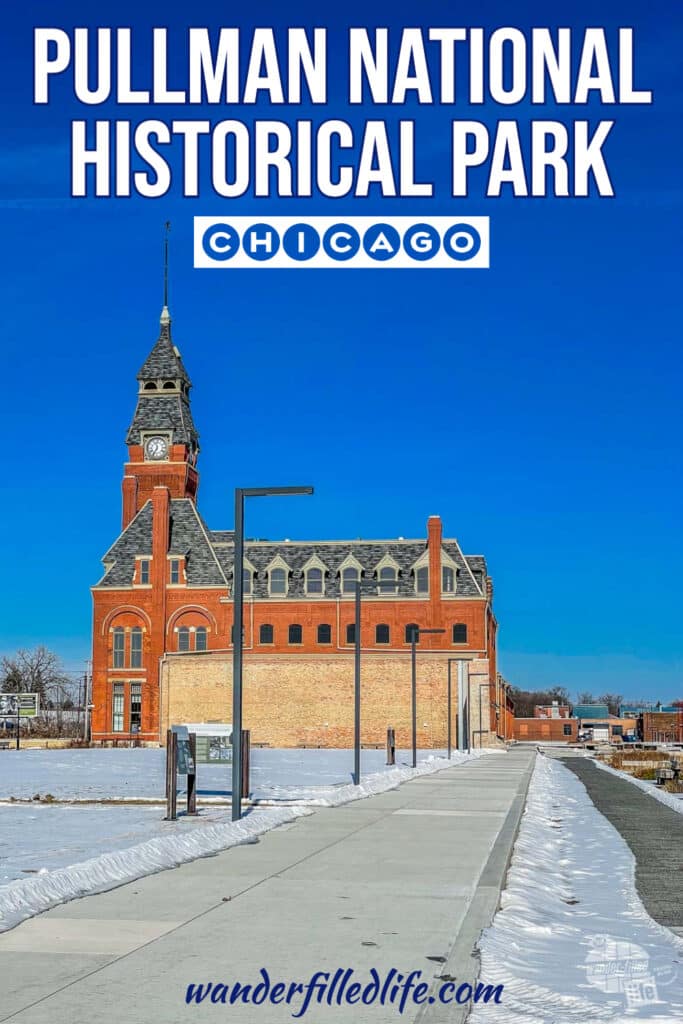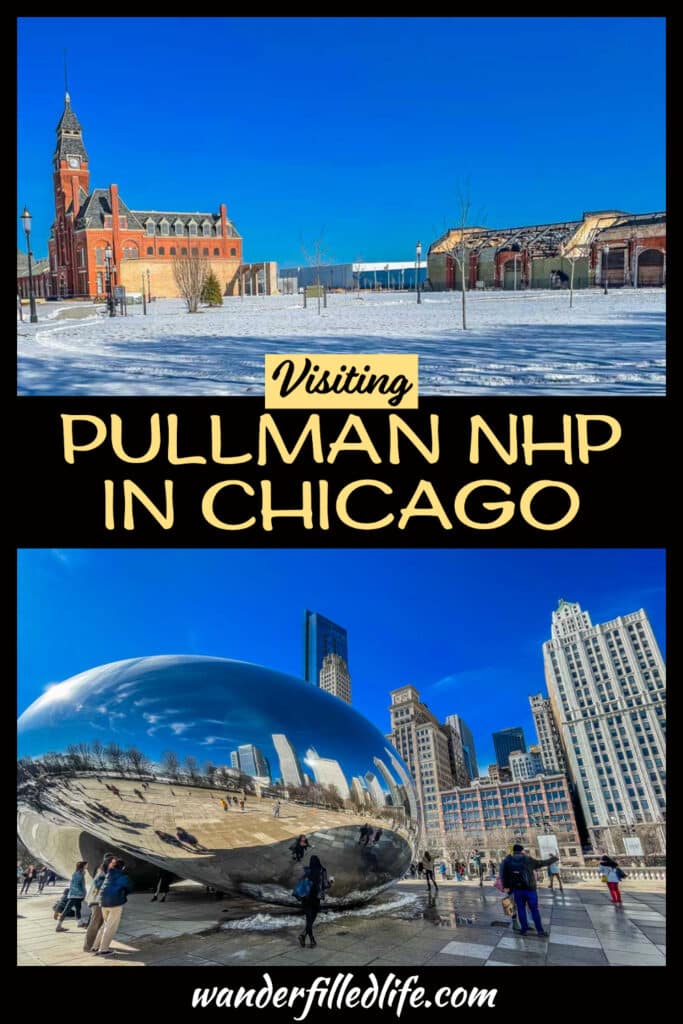Last Updated on September 5, 2023 by Grant
Pullman National Historical Park preserves a planned community built around the former Pullman Palace Car Company. Founded by George Pullman in 1867, the Pullman Palace Car Company was best known for its luxury train cars. Indeed, these cars rivaled five-star hotels.
When visiting Pullman National Historical Park, you’ll learn about four major stories: the Pullman Palace Car Company and factory, the planned community of Pullman, the infamous Pullman strike of 1894 and the famed Pullman porters. The Pullman brand had a huge impact on rail travel, urban planning, industrial innovation and both the civil rights and labor movements. Indeed, learning about small slices of American history such as this is just one reason why we love visiting the smaller national park sites.
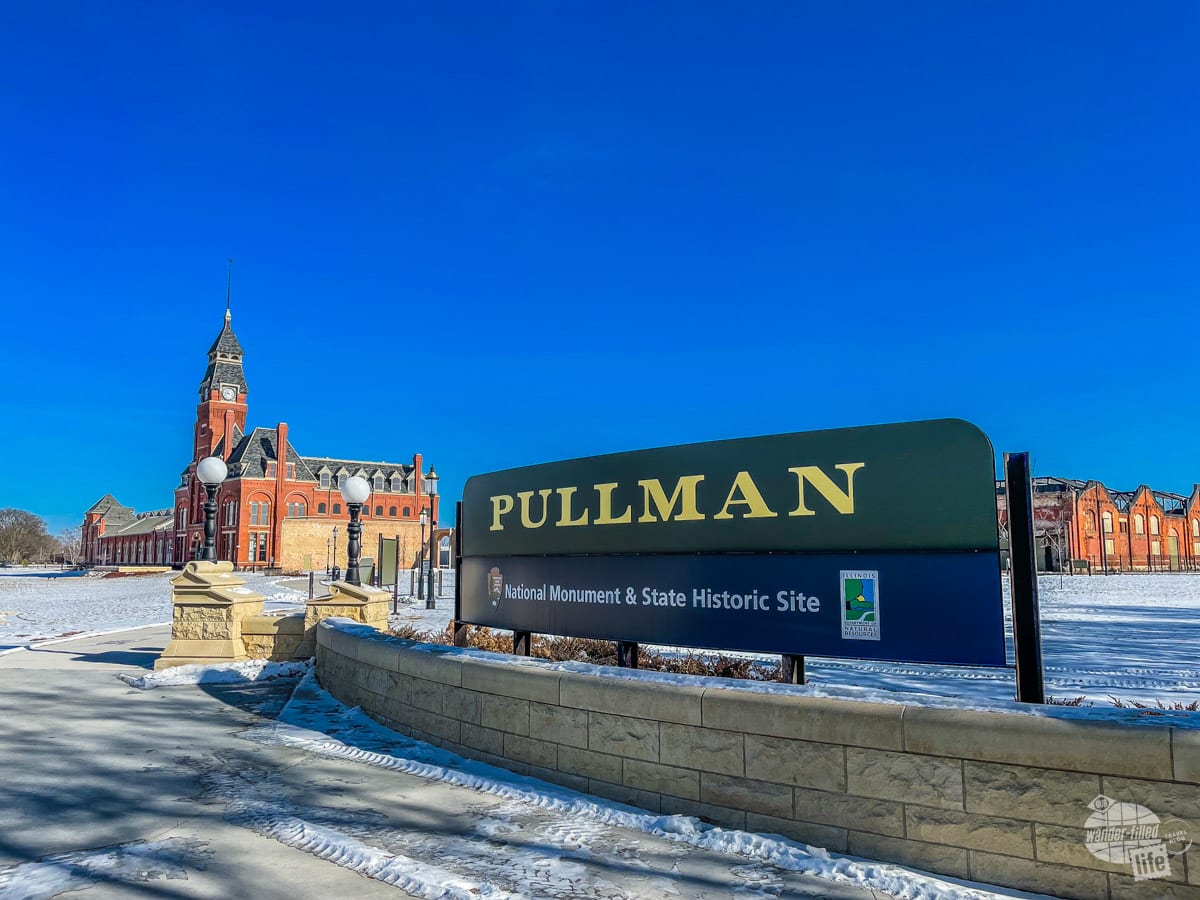
Originally designated as Pullman National Monument in 2015, this is the only national park site in Chicago. In December 2022, Congress passed legislation renaming the site as a National Historical Park. We visited in early February 2023 and signage had not yet been updated, but the rangers were very excited about their new name, which highlights the fact that the site is focused on history.
In general, we are not huge fans of renaming park sites. In this case, though, it makes sense. The term “National Historical Park” is a bit more descriptive than “National Monument.”
(Disclaimer: When we link to places where you can buy our stuff or places we stayed, we are using special codes that earn us commissions on the sales at no additional cost to you. Please see our Review Policy for more information.)
What to Do at Pullman National Historical Park
As usual, we suggest that you start your visit to Pullman National Historical Park at the Visitor Center, which is housed in the Administration Clock Tower Building. This really is the heart of the park and where you can talk to a ranger, join a guided tour and check out the exhibit hall. The exhibits and rangers also tell the story of the Pullman Company and planned community.
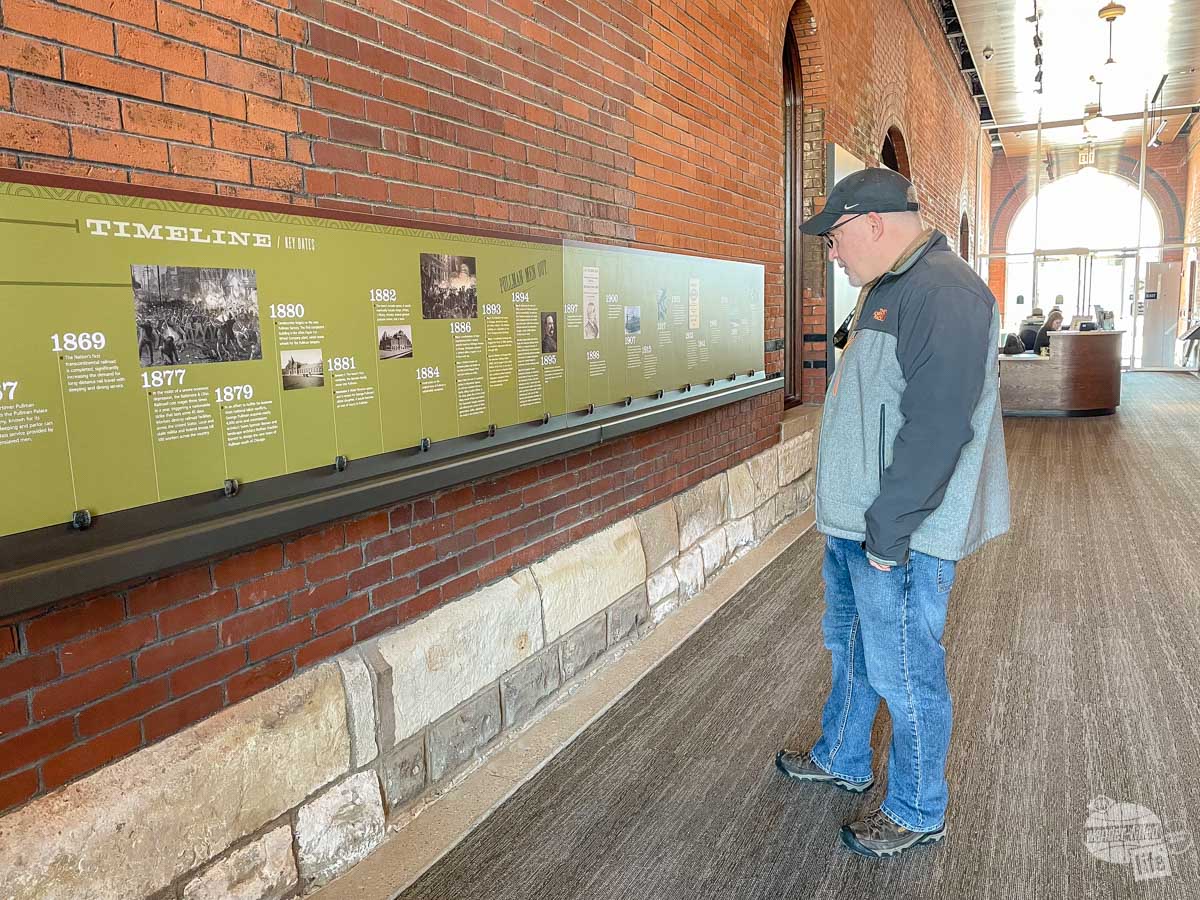
Hopefully, you can plan your visit to Pullman National Historical Park so that you can participate in a ranger-guided tour. These are typically offered daily at 11:00 am and 2:00 pm and last about 45 minutes. Check the park’s website or call to confirm, though, as things can change.
We made a point to arrive about 15-20 minutes before the guided tour, which was just about perfect. That gave us plenty of time to pick up the park brochure, chat with a ranger and take a peek at a couple of exhibits before the tour.
After the tour, we spent more time checking out the exhibits and walking around the historic town.
Ranger-Guided Tour
For us, the ranger-guided tour of Pullman National Historical Park was the highlight of our visit. The tour started at the visitor center and made a short loop around the green space beside the Clock Tower building. While the route was not long, we got a ton of information and felt that we truly understood the history of the company and town by the end of the tour.
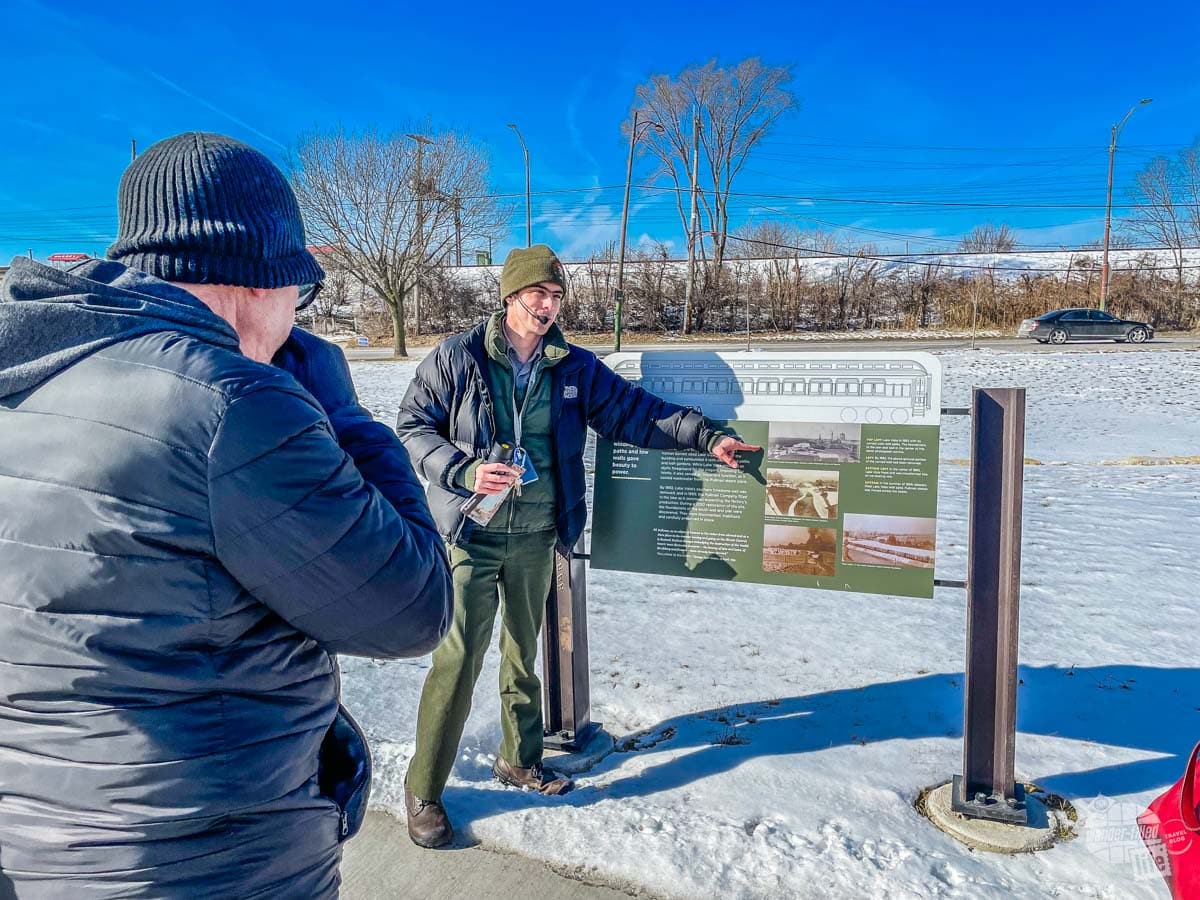
Throughout the tour, the ranger shared information about the Pullman Palace Car Company and Mr. Pullman’s vision for the planned community. Hearing about how it was all intertwined really allowed us to understand the benefits and difficulties of the company town.
The ranger also pointed out where there used to be a small lake and additional buildings that are no longer standing. While the tour didn’t go through the neighborhood, the homes and the company-owned Florence Hotel are easily visible from the tour route. Throughout the tour, the ranger referenced the layout of the town and pointed out how the nicer homes were closer to the business entrance.
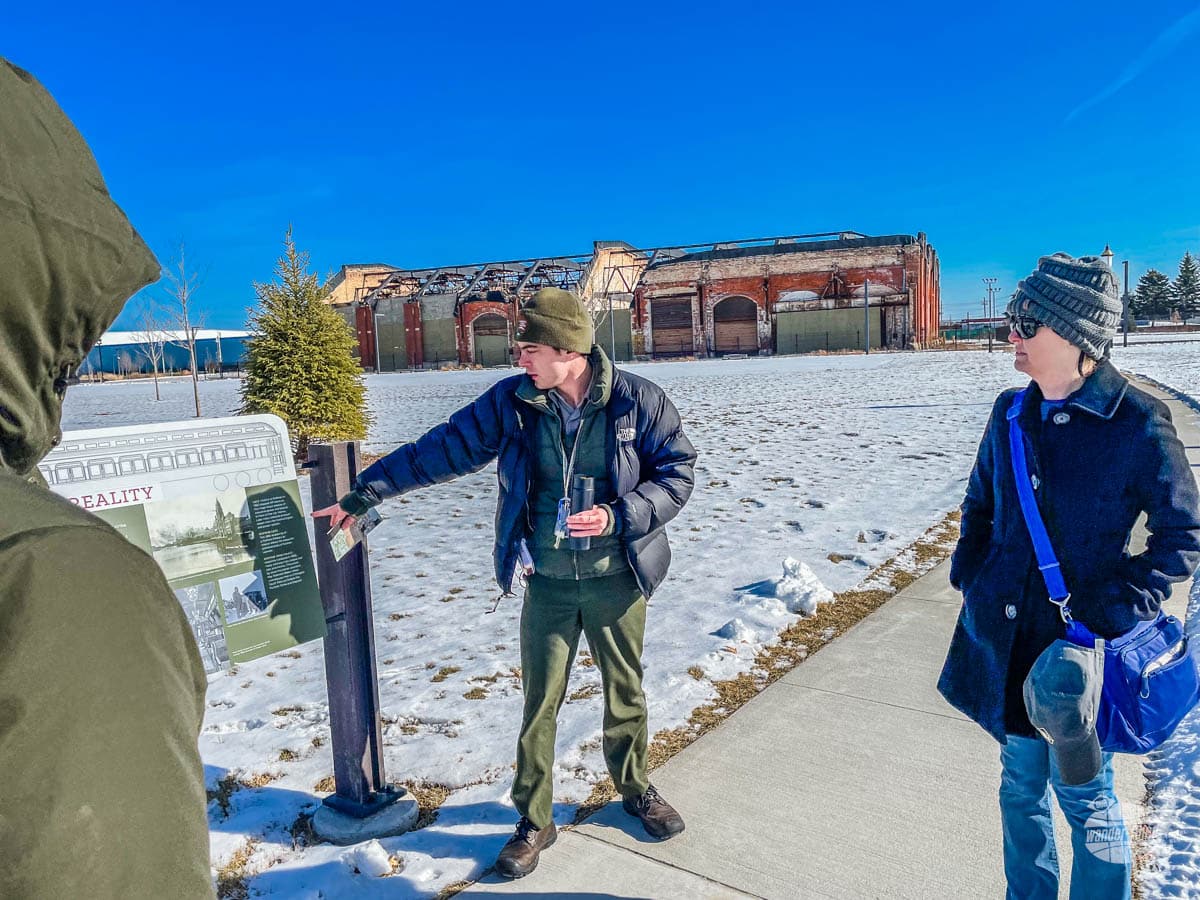
Unfortunately, many of the old buildings are either no longer standing or not suitable for touring. In fact, the visitor center building has just recently been refurbished. Still, as we walked past the Rear Erecting Shop (where train cars were actually built), the ranger gave us a quick demonstration of the process used. Hopefully, some of these older buildings will be available to tour in the coming years.
Along the way, we also learned about how the 1893 depression affected the Pullman company. In fact, this ultimately lead to a nationwide strike by American Railway Union workers in 1894. While the workers gained little, it did highlight the power of organized labor unions. Of course, it also exposed just how far the government can (and will) go to keep order.
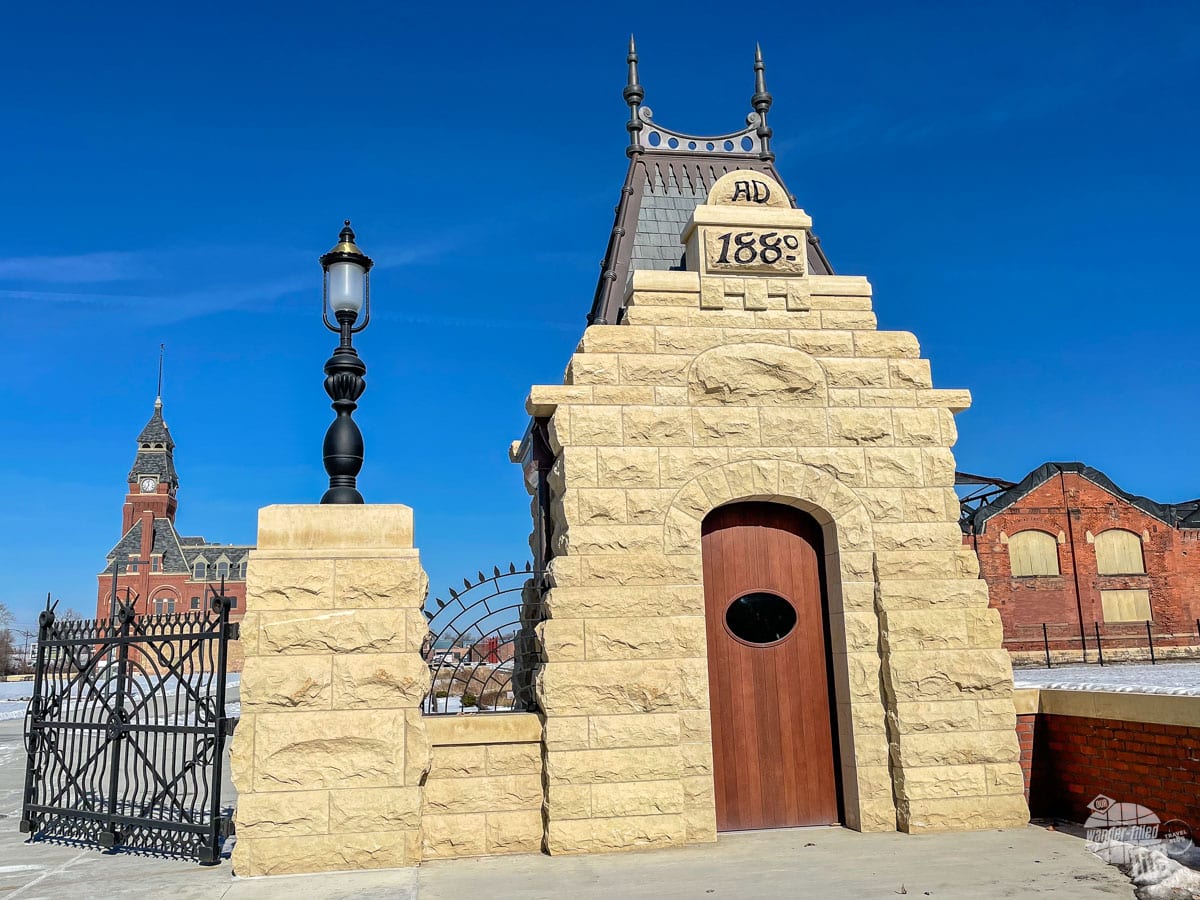
Exhibit Hall
Following our tour, we headed back into the Clock Tower building for a full tour through the Exhibit Hall. This large display really is a great place to learn more about all of the various facets of Pullman and its people.
We spent about 15-20 minutes looking through the exhibits. If you miss the ranger-guided tour, I would certainly budget more time for the exhibit hall. While it’s not nearly as interactive as the tour, it still provides a lot of the same information.
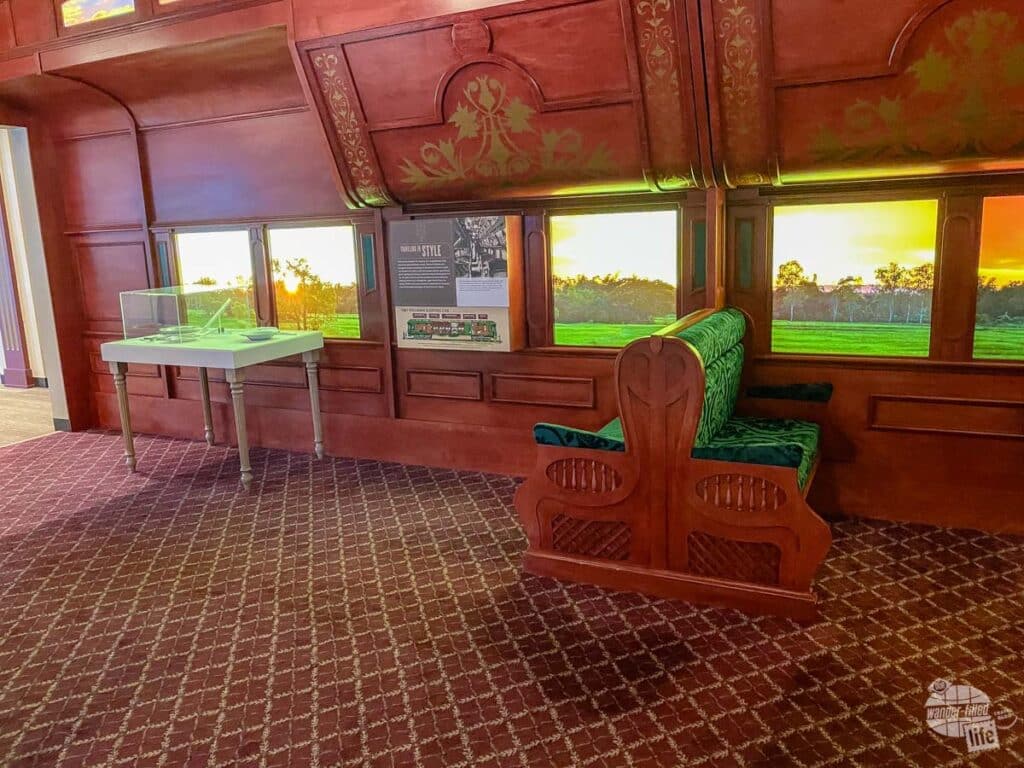
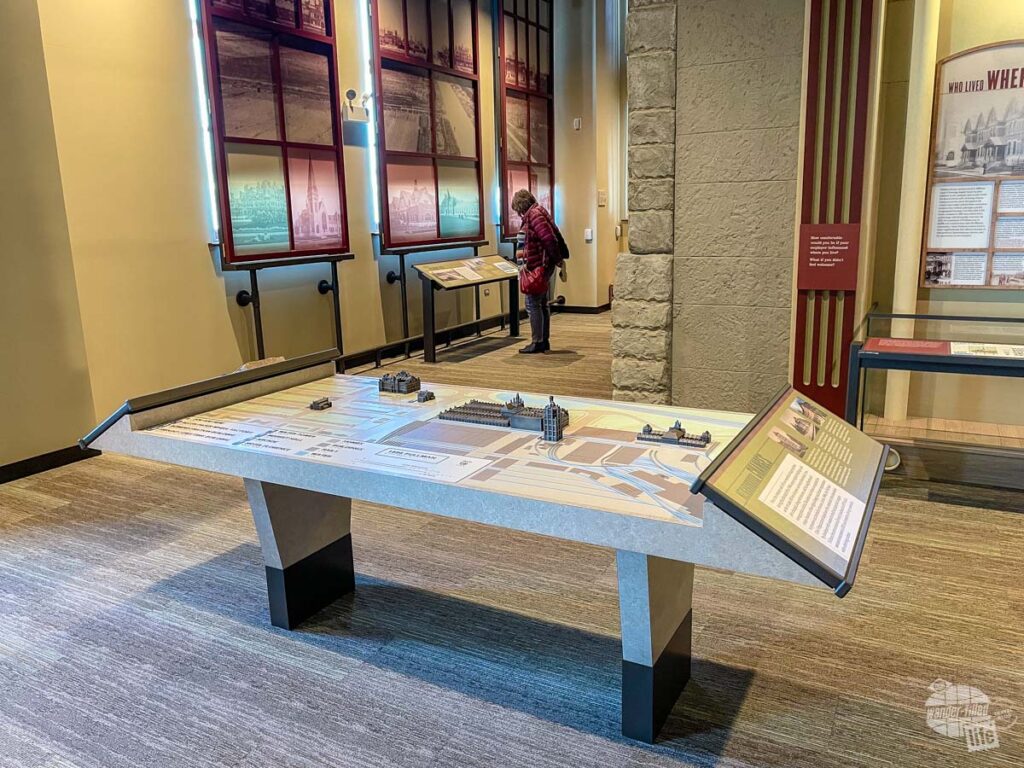
Additionally, we found the rangers at Pullman National Historical Park eager to answer questions and share more about the company, town and overall history. If there is anything you hear on the guided tour or read about in the exhibits that you want more information on, don’t be afraid to ask!
Historic Pullman Neighborhood
After leaving the Visitor Center and Exhibit Hall, we spent a little time walking through the historic neighborhood of Pullman. You can pick up a map of the town with a self-guided walking tour at the visitor center. It is important to note, though, that today these homes are privately owned and occupied. Please respect their privacy as you wander through the neighborhood.
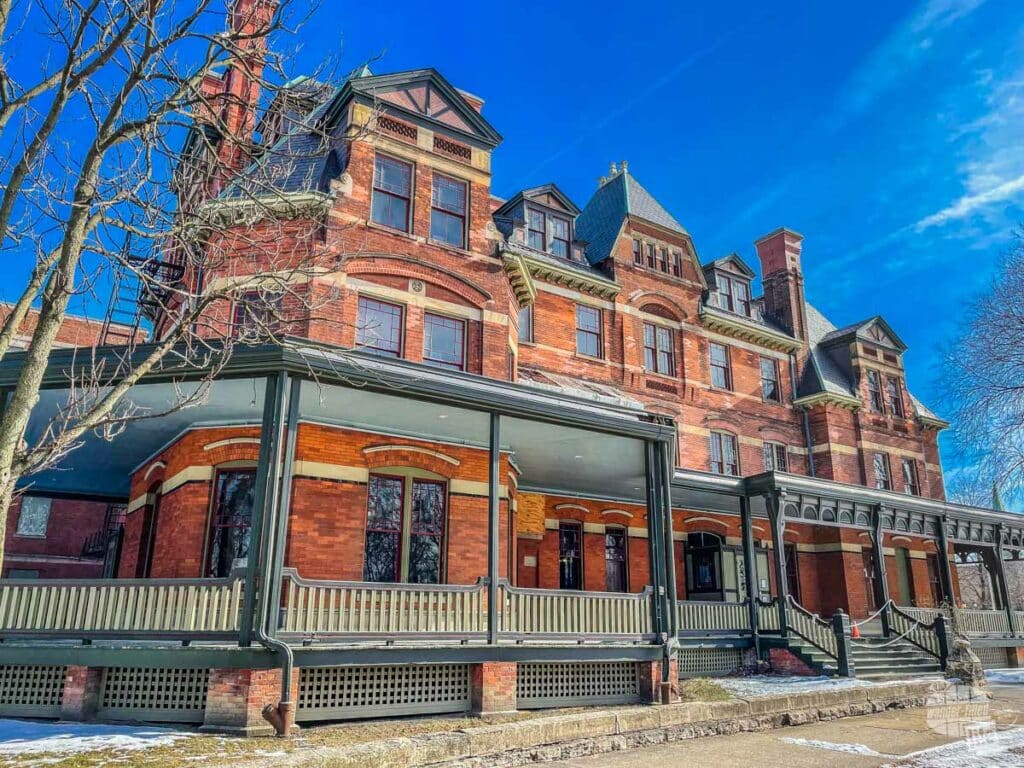
For us, seeing the different types of homes and buildings that were part of the town was interesting. There really is a wide range of brownstones, single-family homes, churches and other buildings. You can also walk by the historic Florence Hotel, which was named for George Pullman’s daughter.
Unfortunately, there is little more to the town than personal residences. Even the hotel is currently closed. The website says that you can walk on the porch and peer into the windows, but the stairs were roped off during our visit.
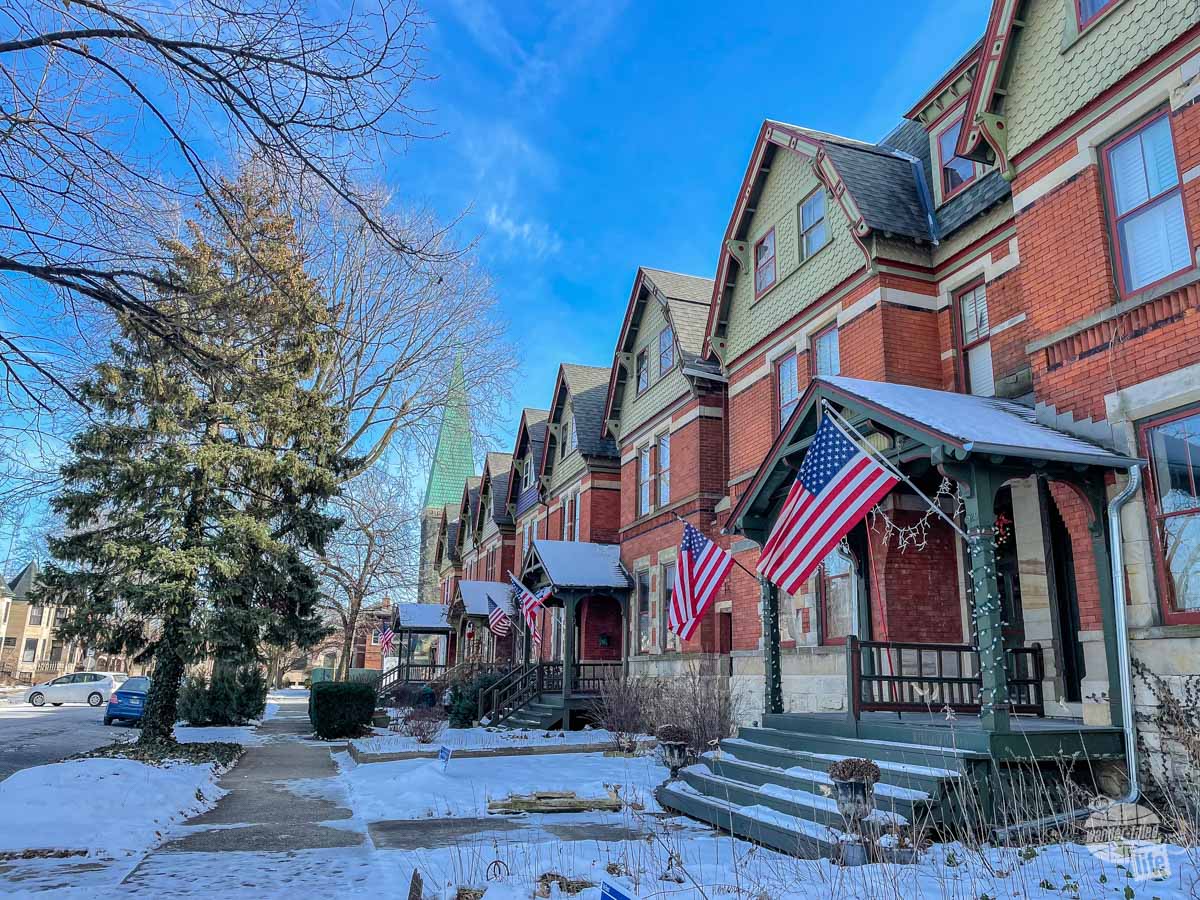
According to the park’s website, the Pullman House Project will allow visitors to tour several residences that are decorated for the period. This is scheduled to begin in Spring 2023, so be sure to check online for more information as you plan your visit.
Getting to Pullman National Historical Park
Pullman National Historical Park is located about 17 miles south of Downtown Chicago. You can reach the park by car, bus or the Metra rail system. You’ll find step-by-step directions on the park’s website. Since Chicago is generally fairly easy to navigate without a car, we relied on the rail system to get around during our visit.
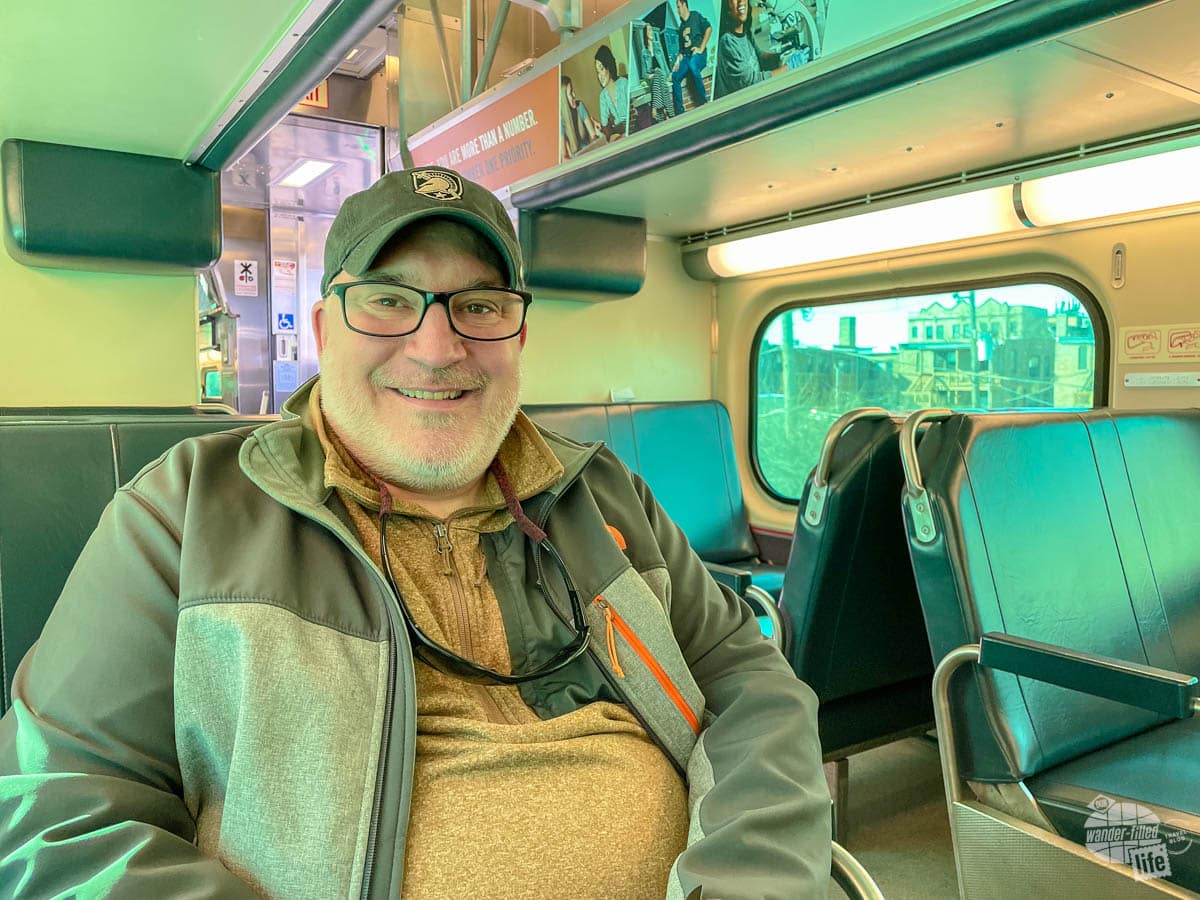
It is important to note that the Metra Electric commuter trains are separate from the Chicago Transit Authority train routes that service downtown and the airport. Thus, if you are using CTA to get around town, you’ll need to make sure you have a separate ticket or the Ventra app for the Metra Electric lines.
We got on the Metra Electric line at Millennium Station in downtown. From there, it was an easy ride to the 111th/Pullman stop. Pullman National Historical Park is just a short 5-minute walk from Pullman Station.
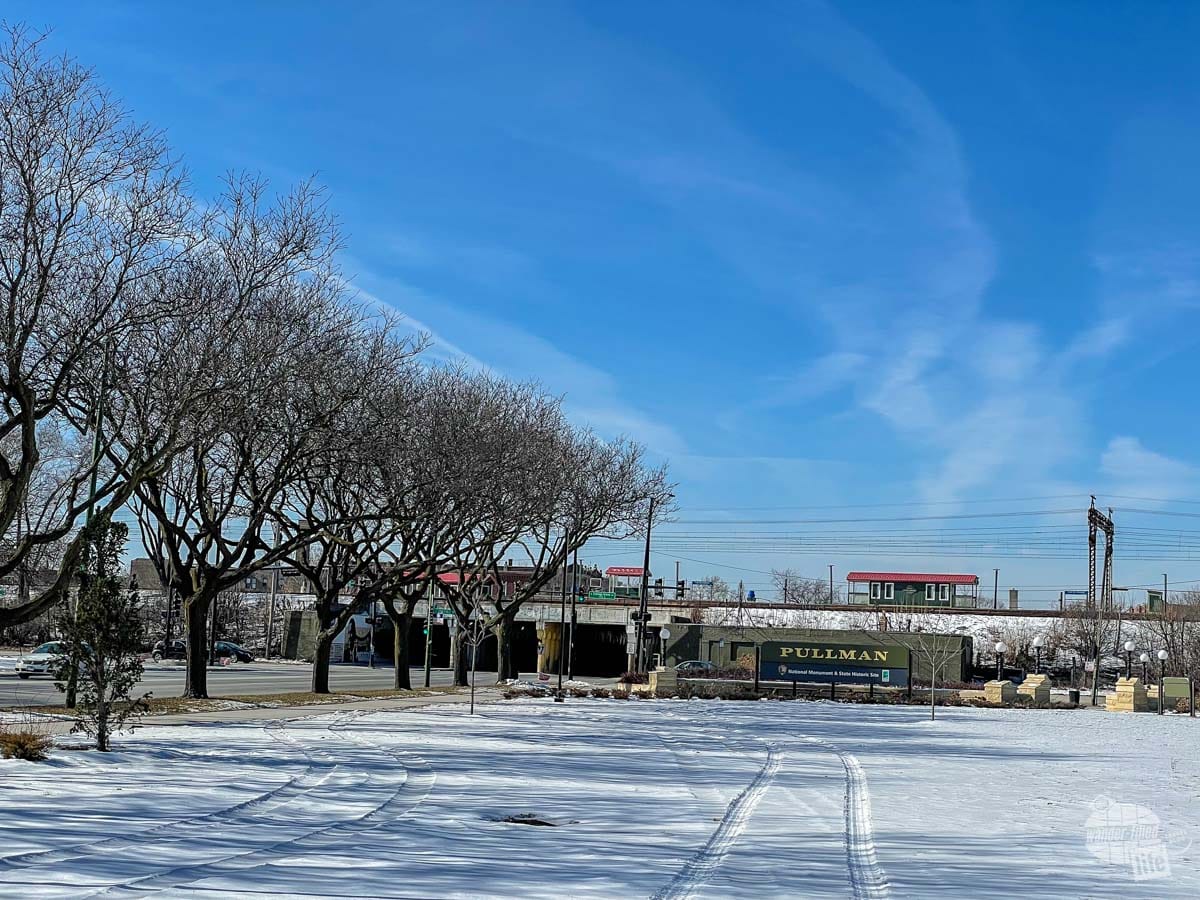
It is important to note that the Metra Electric trains do not run all that often, especially on the weekends. Be sure to check the timetable carefully and plan ahead. Tickets can be purchased at a ticket window before boarding or on the Ventra app. You can also purchase a ticket onboard from the conductor (cash only) if there is no agent on duty at the outlying stations (we did not see one at Pullman).
Additionally, it’s worth noting that there are no real dining options close to Pullman National Historical Park. I suggest taking a snack and timing your visit and meals carefully. We ended up eating a very late lunch once we got back downtown.
Other Things to Do in Chicago
Of course, Chicago is full of great things to do other than Pullman National Historical Park. Unfortunately, we were in town for just a quick weekend visit so didn’t have time to take in everything the city has to offer. Still, we did find time for a few attractions.
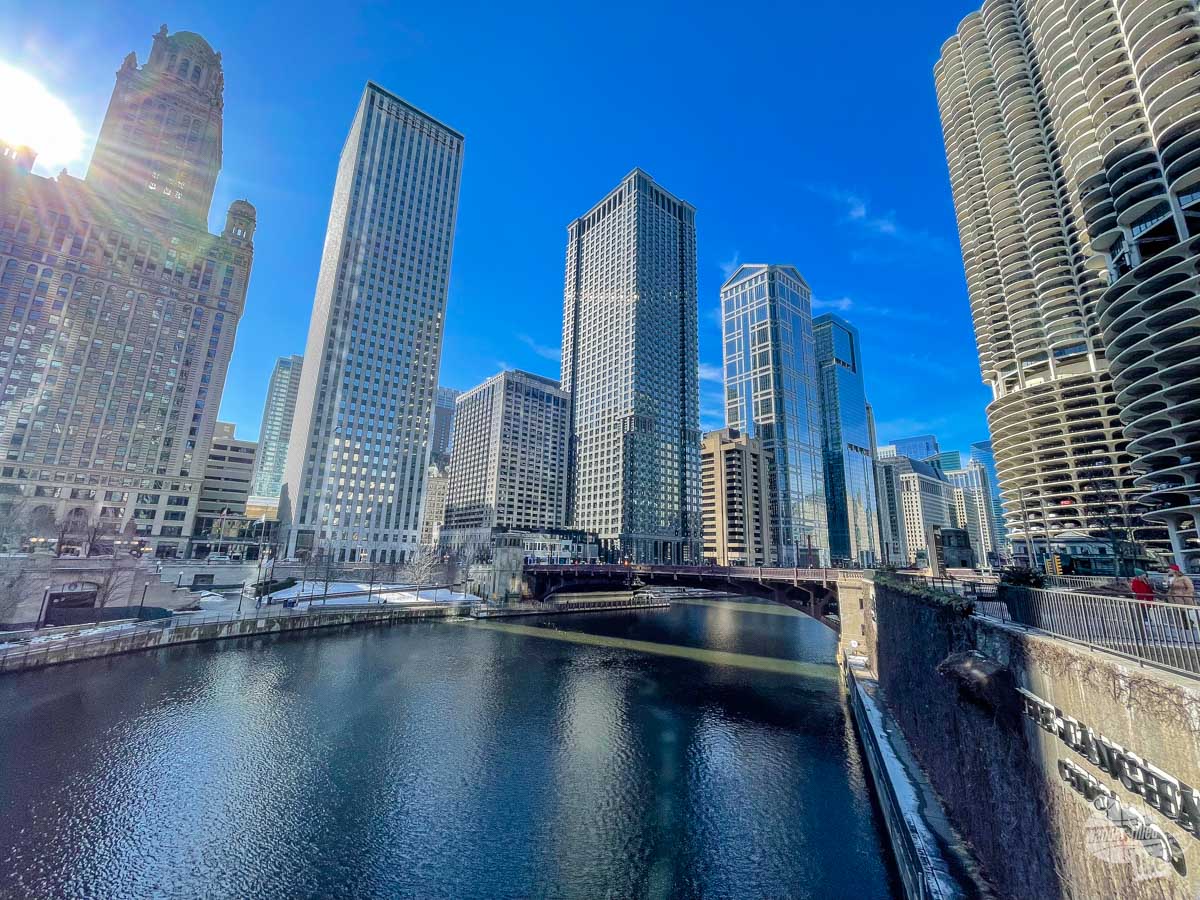
Navy Pier
One of the most popular attractions in Chicago is Navy Pier. Located on the shoreline of Lake Michigan, Navy Pier is a 3,300-foot-long pier filled with shops, restaurants, exhibits and other attractions. In the winter, the walk down the pier was definitely a bit cold and windy. Still, it was really neat looking out over the partially frozen lake.
Inside, you’ll find a nice indoor mall with a wide variety of stores and restaurants.
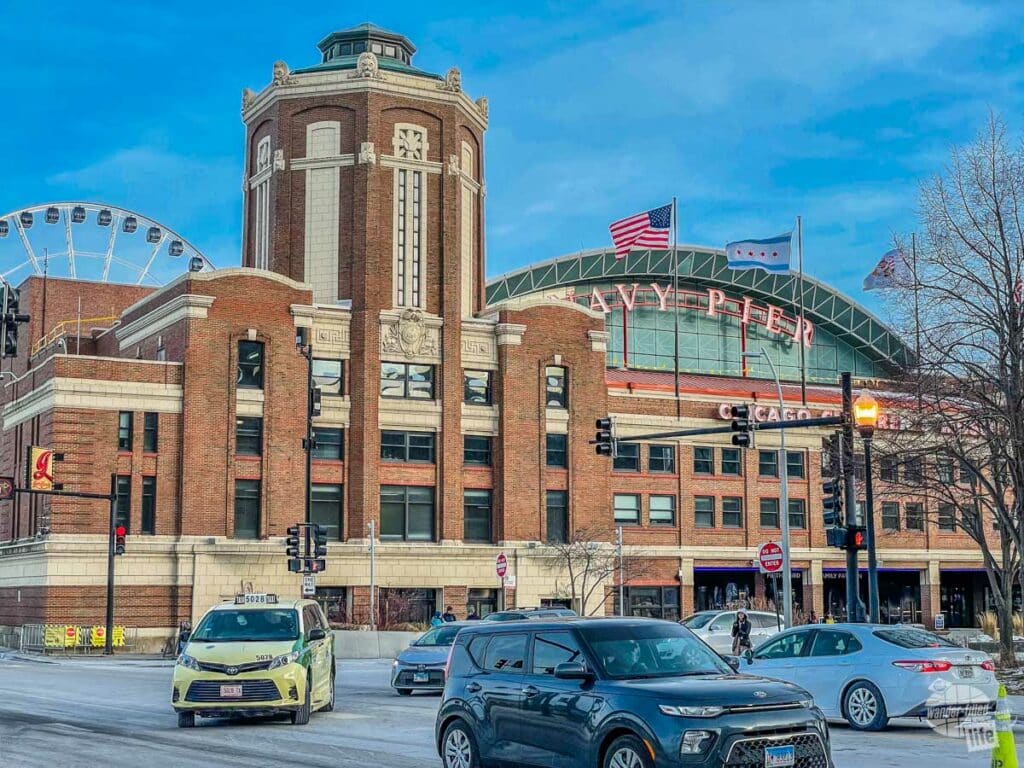
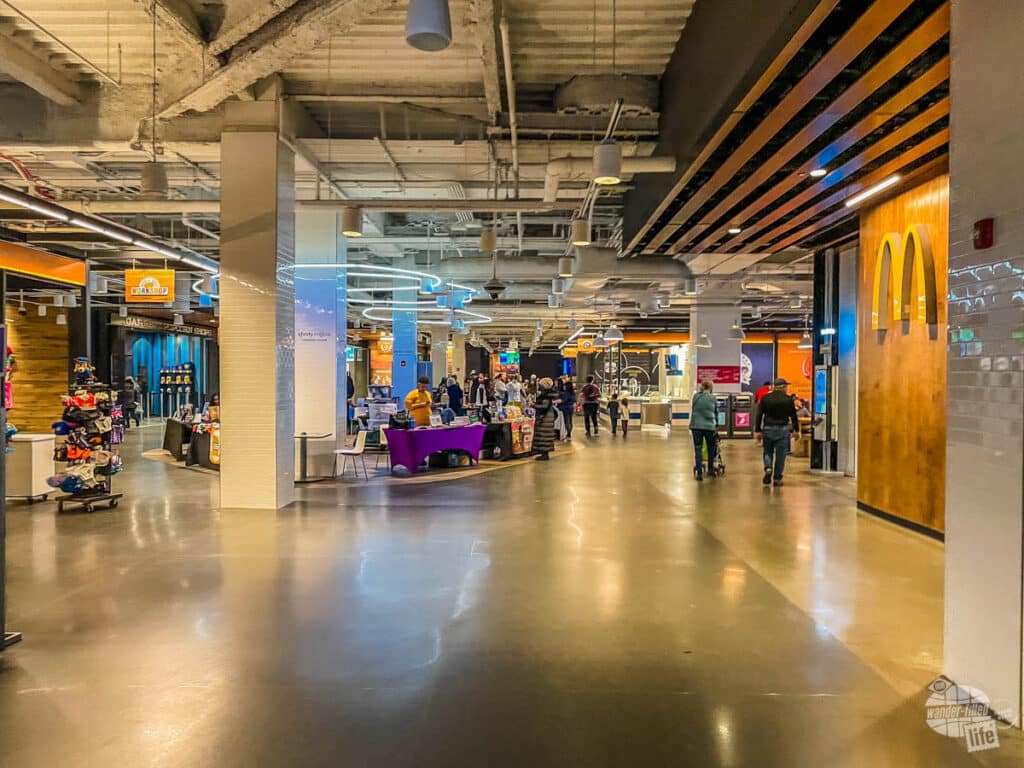
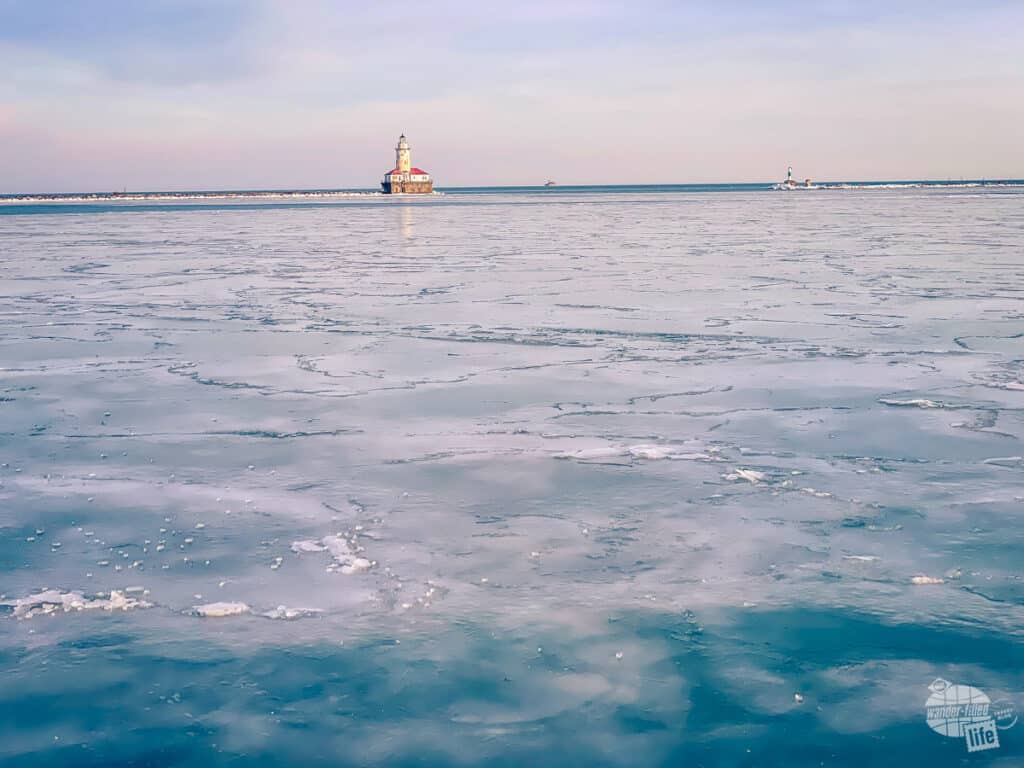
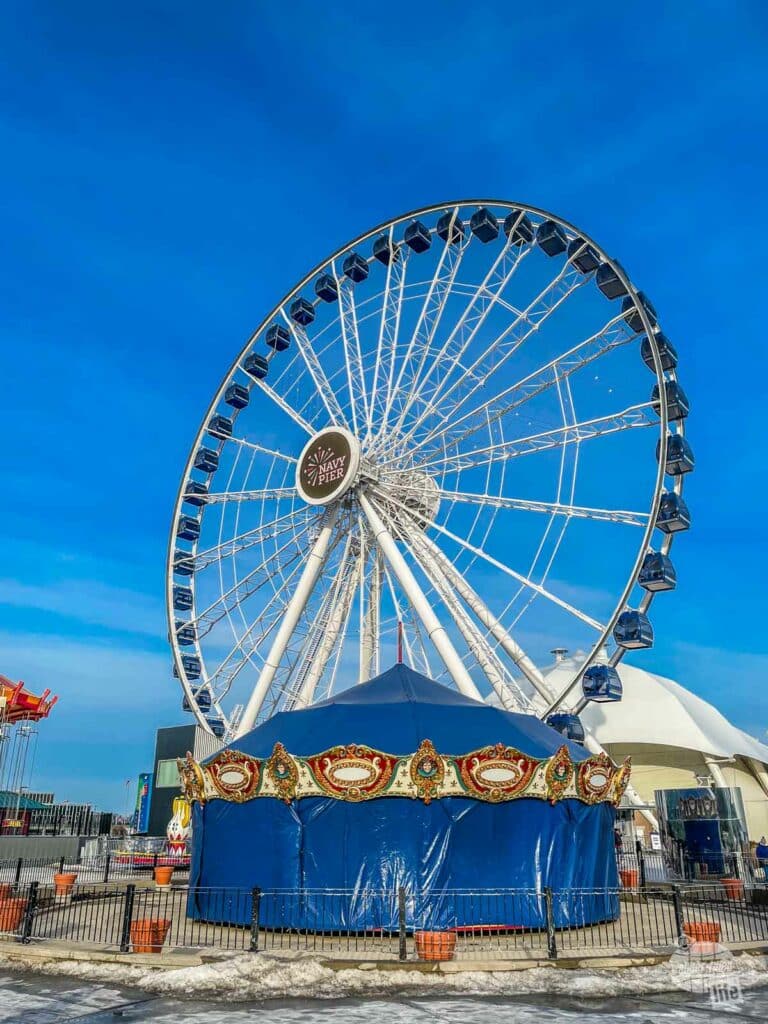
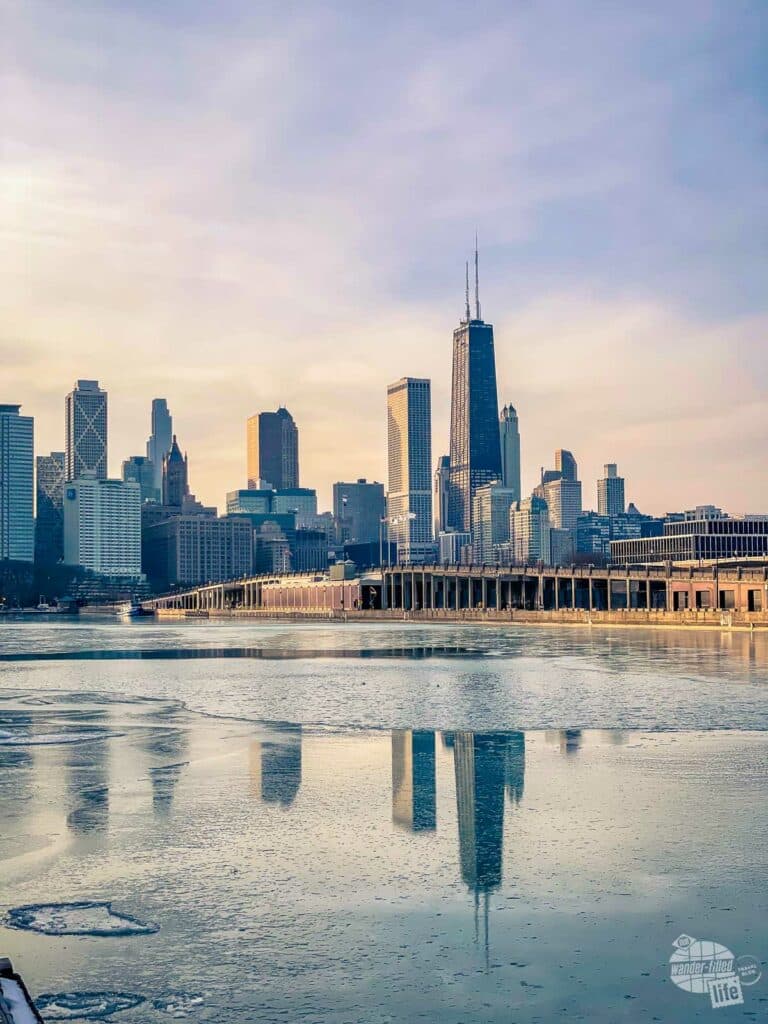
Again, we didn’t have time to fully enjoy all the offerings at Navy Pier but it was easy to see why it is one of the most popular things to do in Chicago. In the summer, I’m sure it is a great place to enjoy a meal overlooking the lake. In fact, there is even an outdoor beer garden that is open May through October.
You can easily walk to Navy Pier from downtown Chicago. There is also a large parking garage for anyone driving from outside the city.
Millenium Park
Also downtown, Millennium Park is a 24.5-acre area of the larger Grant Park. The centerpiece of Millennium Park is the Jay Pritzker Pavillion, a 4,000-seat performing arts venue with additional lawn space. Other areas of the park include outdoor gardens, public art and other attractions.
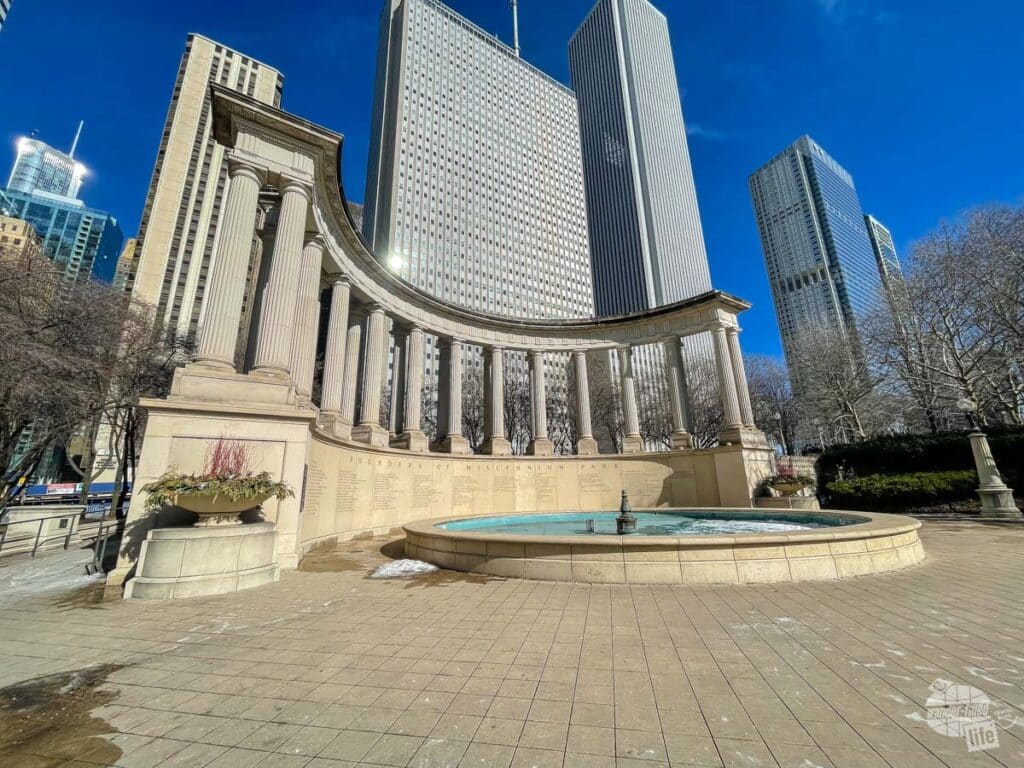
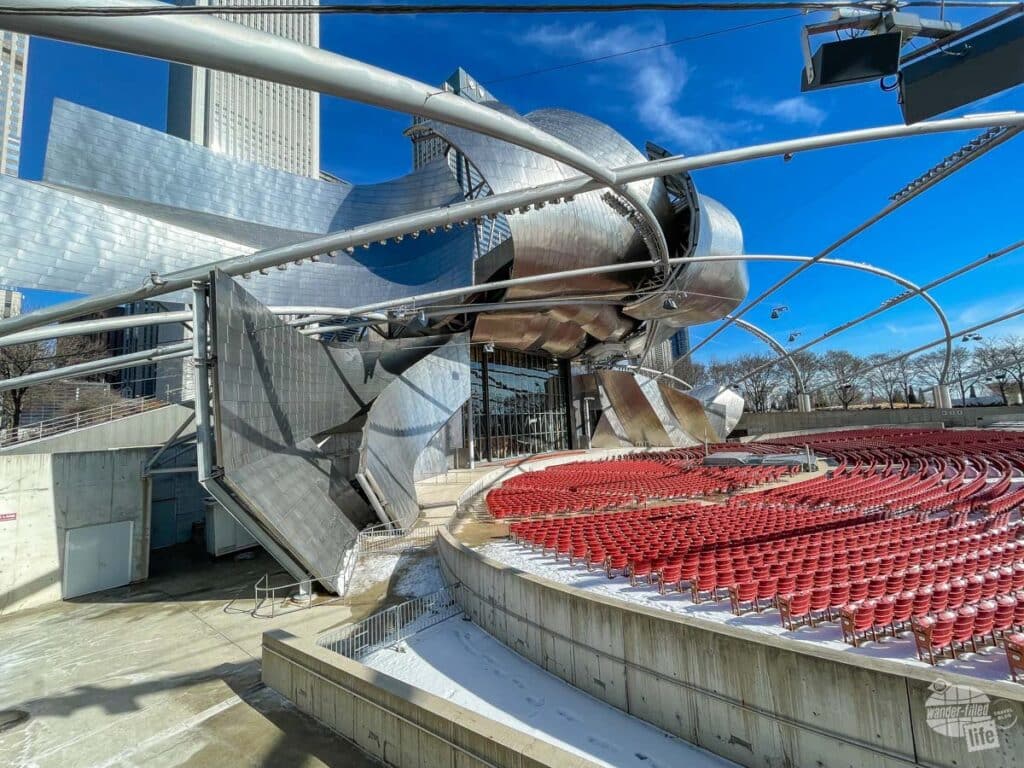
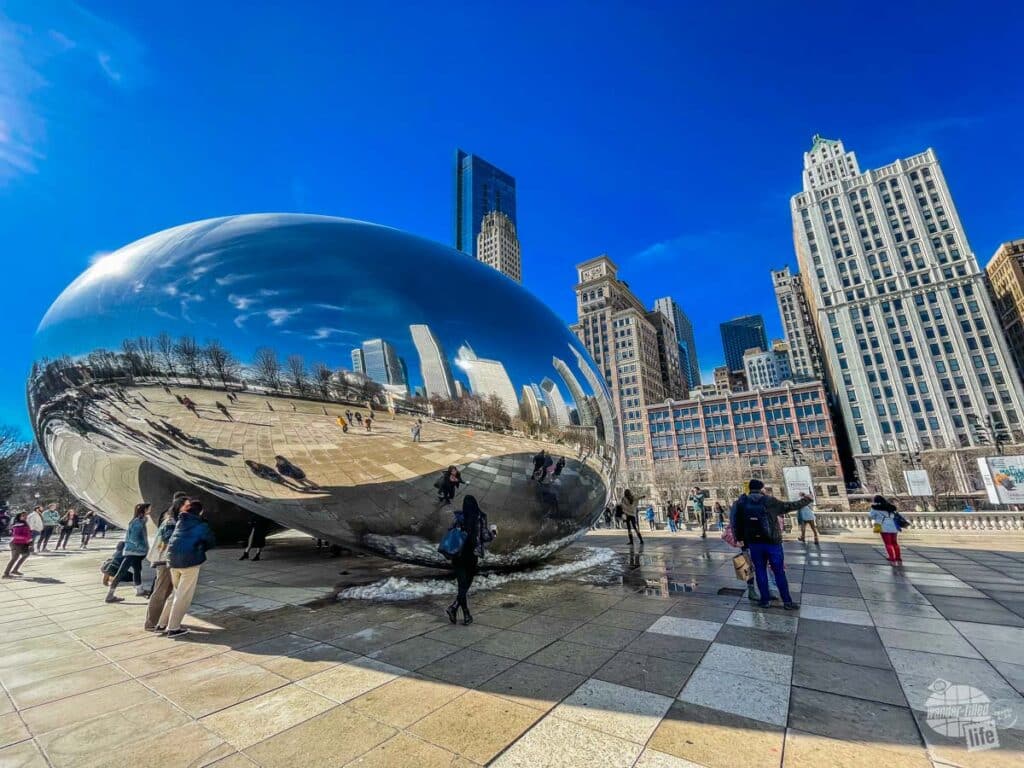
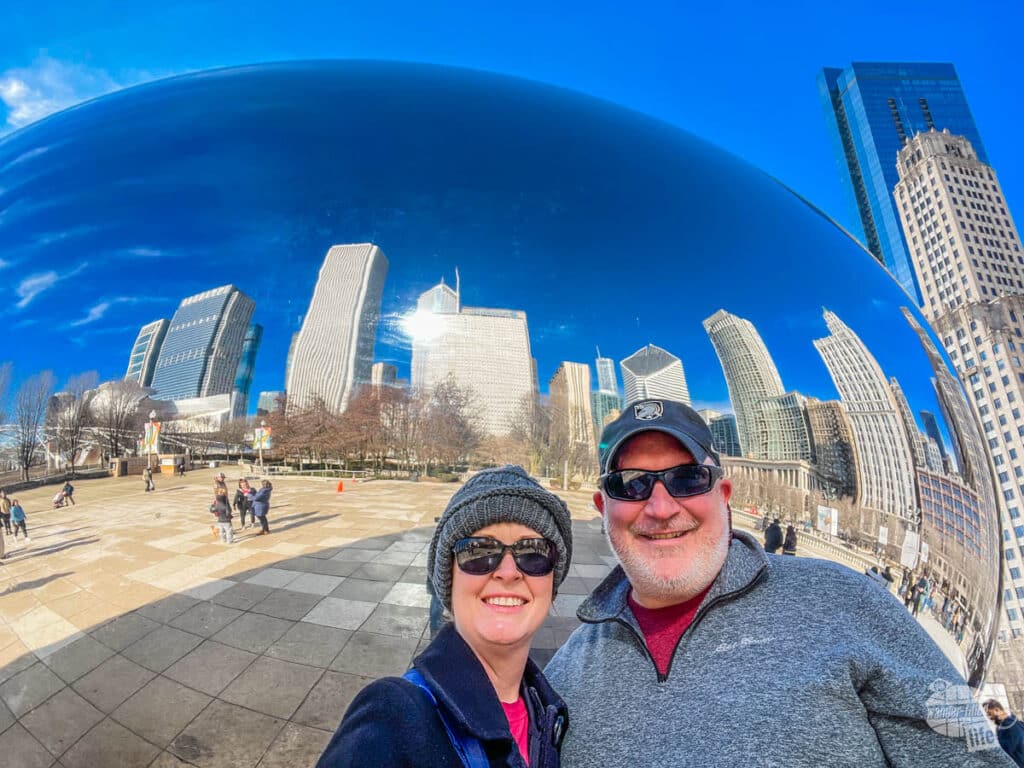
Perhaps the best-known attraction at Millennium Park is Cloud Gate, better known as “The Bean” due to its shape. This reflective steel sculpture memorizes children and adults alike as it reflects the large city skyline and pedestrians below.
You could easily spend hours wandering around Millennium Park on a warm summer day. Even on a sunny but cold winter afternoon, we really enjoyed walking through the park and checking out all of its attractions.
Art Institute of Chicago
Also located in Grant Park, adjacent to Millennium Park, is Chicago’s top museum, the Art Institute of Chicago. It is one of the oldest and largest art museums in the world and houses a wide variety of art from all over the world.
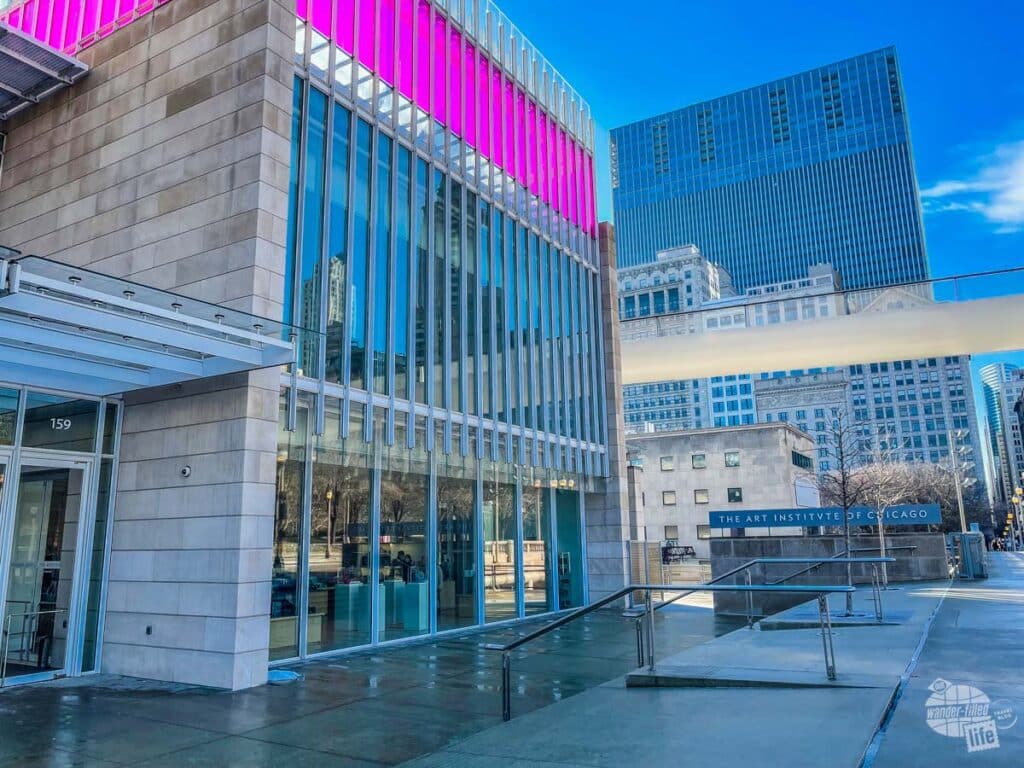
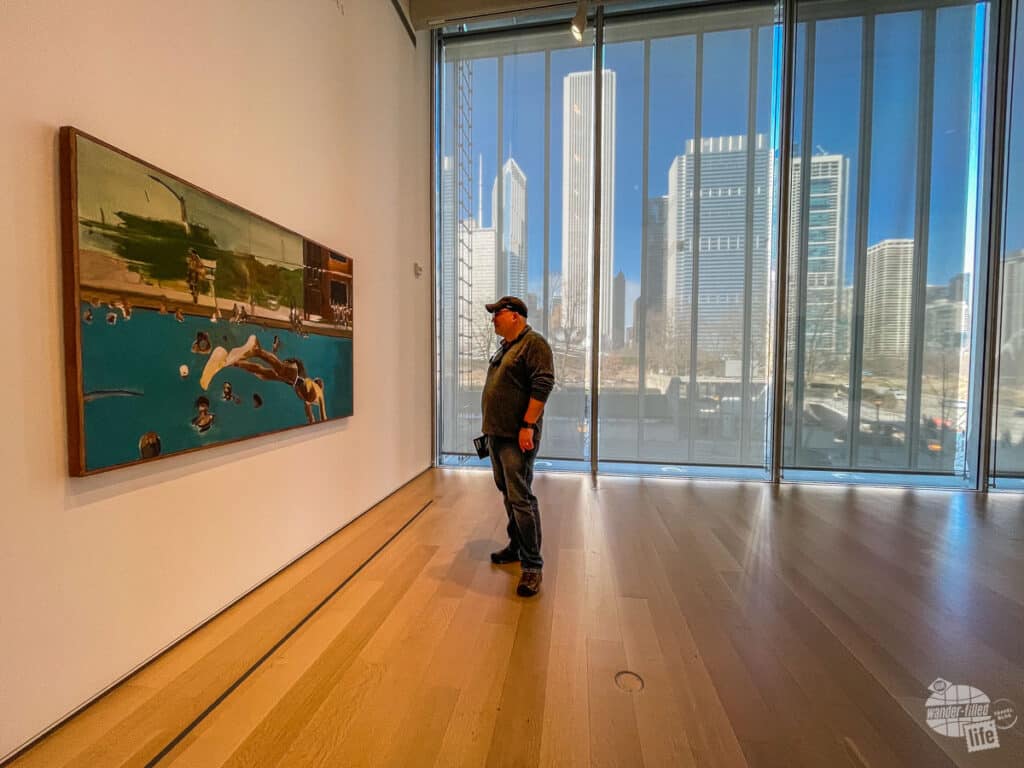
The collection includes American art, European paintings and sculptures, ancient Greek, Roman and Egyptian pieces, objects from China, Korea, Japan and the Middle East, along with a variety of photography, textiles, furniture and more. Seriously, the volume and variety of pieces housed here is simply dizzying.
If you’re looking for well-known pieces, you’ll find Georges Seurat’s A Sunday on La Grande Jatte, Vincent van Gogh’s Self-Portrait, Pablo Picasso’s The Old Guitarist and Edward Hopper’s Nighthawks, just to name a few. Of course, there are countless other pieces that would be recognizable to both art enthusiasts and casual visitors. We, in particular, enjoyed seeing a painting of Inscription Rock, which we saw at El Morro National Monument near Albuquerque.
Read about visiting the Albuquerque-area National Monuments.
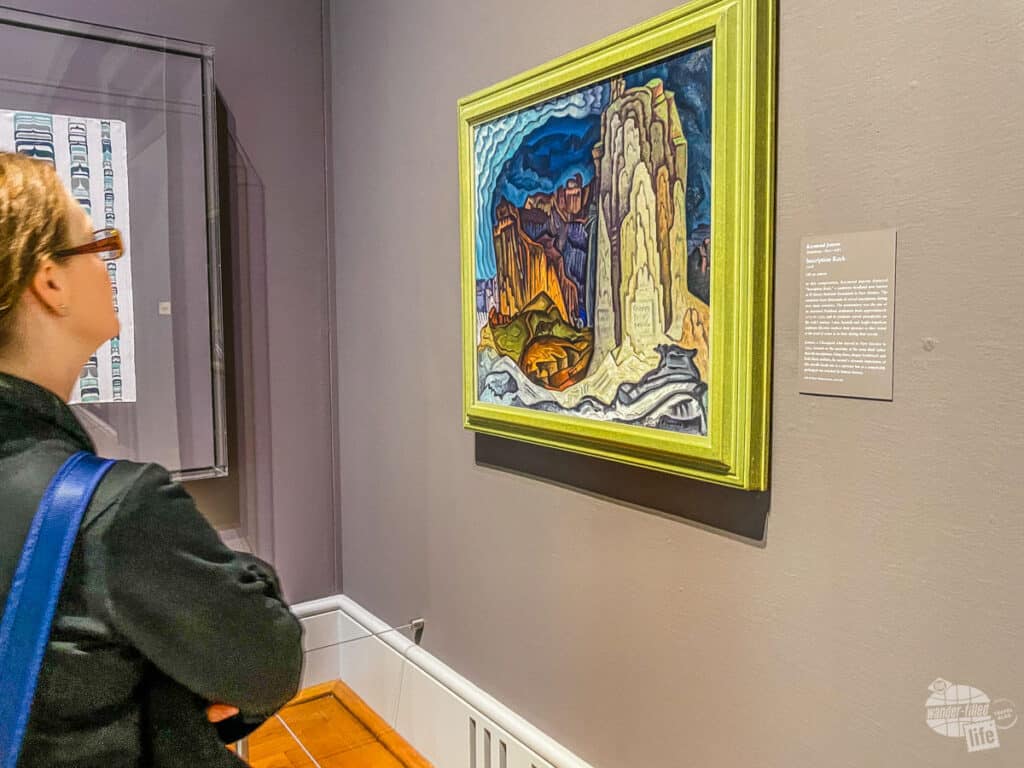
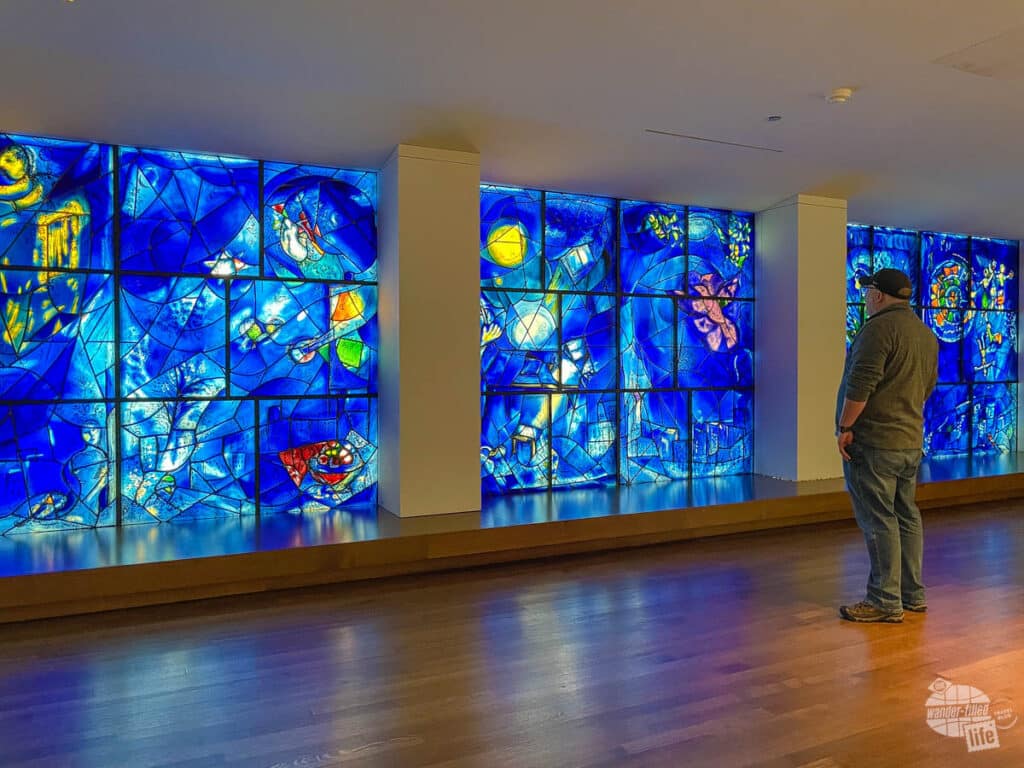
For us, the immensity of the collection, honestly, was a bit overwhelming. Quite simply, this is likely not a museum where you can see everything in one visit. It’s simply too large. We spent about 2-3 hours and, frankly, were exhausted after that! We needed both a physical and mental break at that point.
My suggestion is to see what you can, prioritizing collections of particular interest. But, you’ll likely find interesting pieces just about anywhere, so don’t limit yourself just to the rooms that you think you’ll enjoy.
Where to Stay in Chicago
You’ll find seemingly limitless options of hotels in Chicago. We opted to stay right downtown so that we would have easy access to the rail lines, attractions and restaurants. Keeping our loyalty to Hilton properties, we stayed at the Hilton Garden Inn Chicago Downtown/Magnificent Mile.
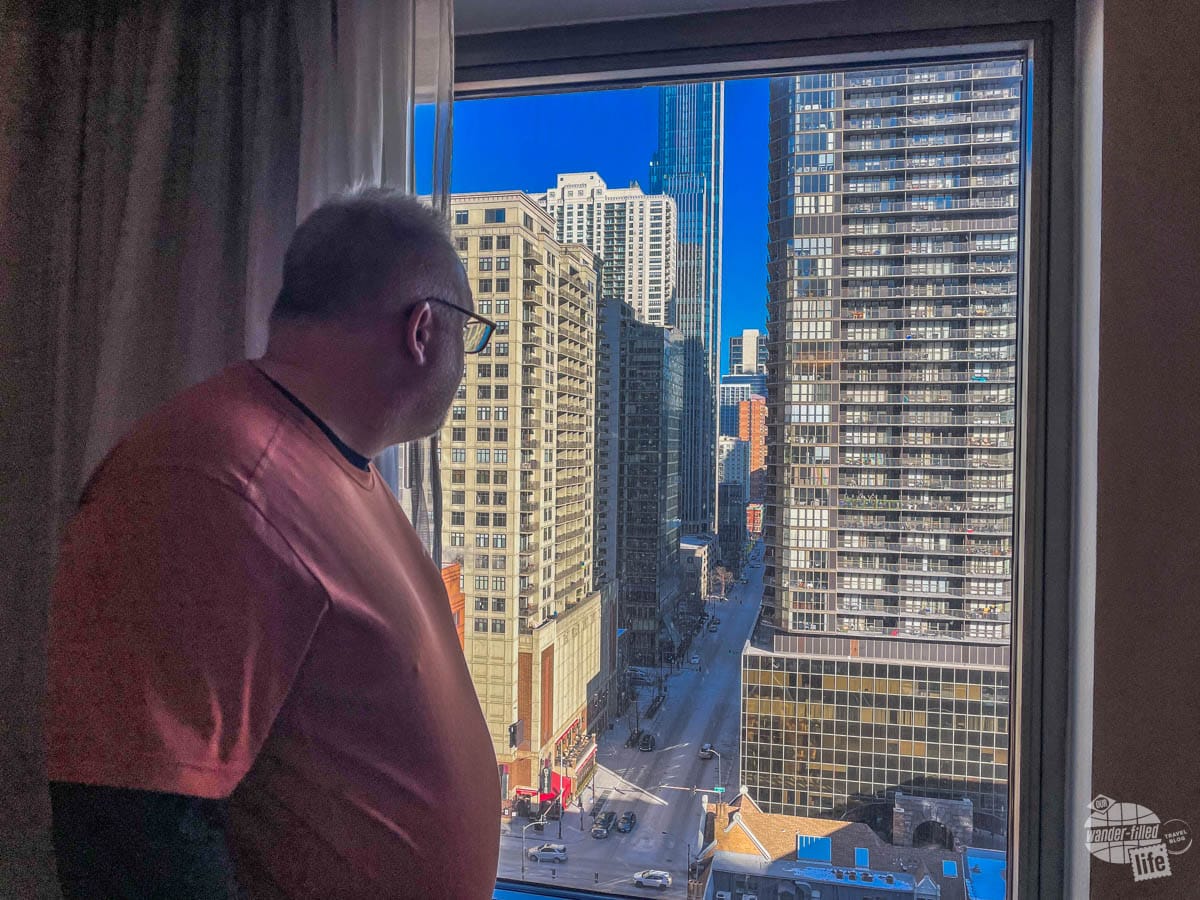
The hotel is in the heart of downtown, just a couple of blocks from the renowned Magnificent Mile, Chicago’s premier commercial district. Here, you’ll find a wide variety of shops, restaurants, hotels and luxury name brands.
The rail station is right outside the hotel doors and we were within easy walking distance of pretty much everywhere we wanted to go. Of course, we don’t mind walking quite a bit so “walking distance” for us might be a bit far for others. Still, the rail lines are easy to access and, of course, you can always grab a Lyft or Uber if you prefer.

Of course, there are plenty of other options if you prefer a different hotel chain, want to check out a boutique hotel or would rather stay farther outside of downtown.
Read TripAdvisor Reviews | Book the Hotel
Where to Eat in Chicago
There is certainly no shortage of great food in Chicago. A few of the most iconic dishes include deep-dish pizza, Chicago-style hot dogs and Italian beef sandwiches. Of course, you’ll also find a wide variety of high-quality, chef-driven restaurants.
With just a couple of days we, unfortunately, did not get to eat everything that was on our list but we still enjoyed some great meals.
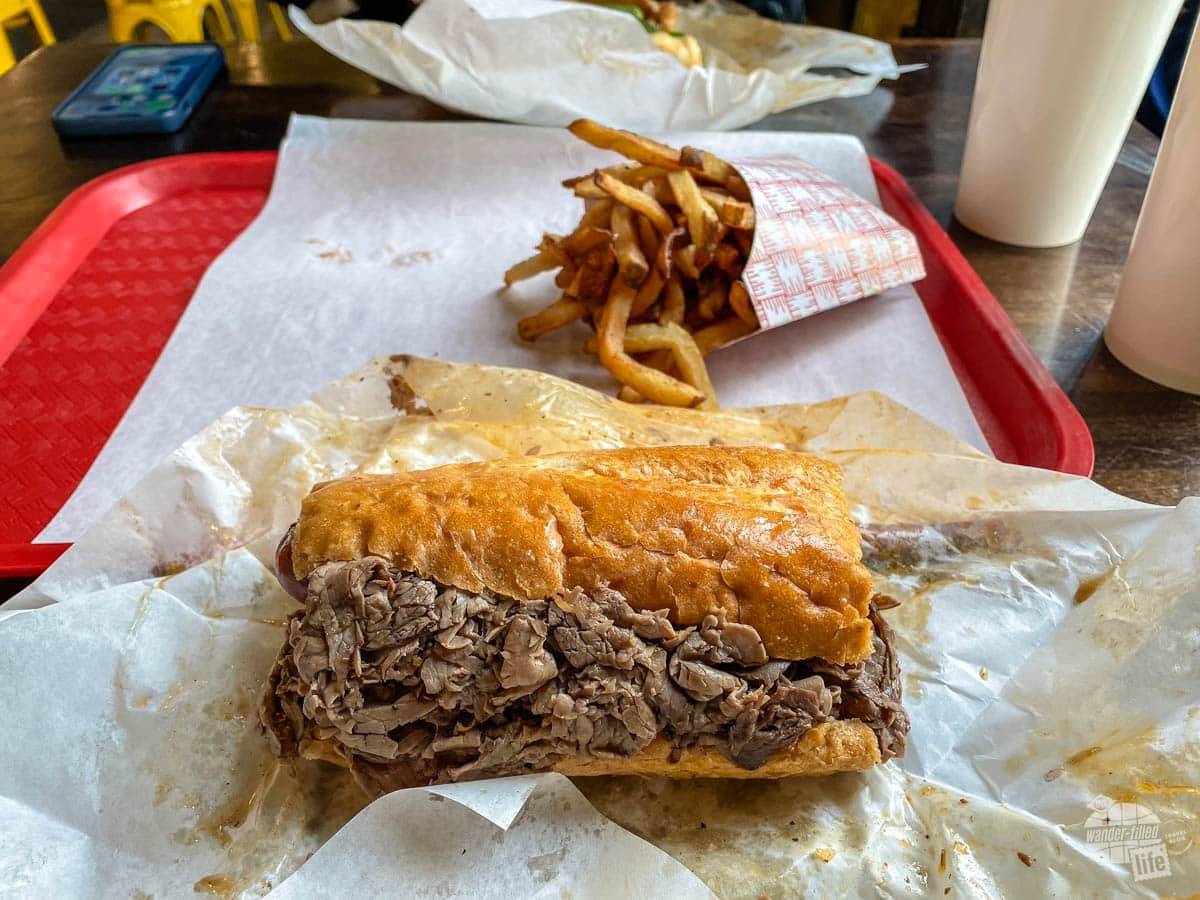
After our visit to Pullman National Historical Park, we returned to downtown for a late lunch at Al’s Italian Beef. I opted for a traditional beef sandwich with provolone and peppers. Grant chose the beef and sausage combo. Both were absolutely delicious and its easy to see why this is a Chicago favorite!
For dinner, we had a reservation at Siena Tavern, a modern Italian restaurant. If you’re a fan of Top Chef, you’ll likely know of Season 5 Chef Fabio Viviani, who leads the restaurant. While the entire menu looks fantastic, it was the classic Cacio e Pepe (cheese and pepper) that stole my heart. We first had this in Rome and it’s been an absolute favorite of mine ever since. Our entire meal, starting with the unique Coccoli appetizer (crispy dough with cheese and prosciutto) was absolutely fantastic.

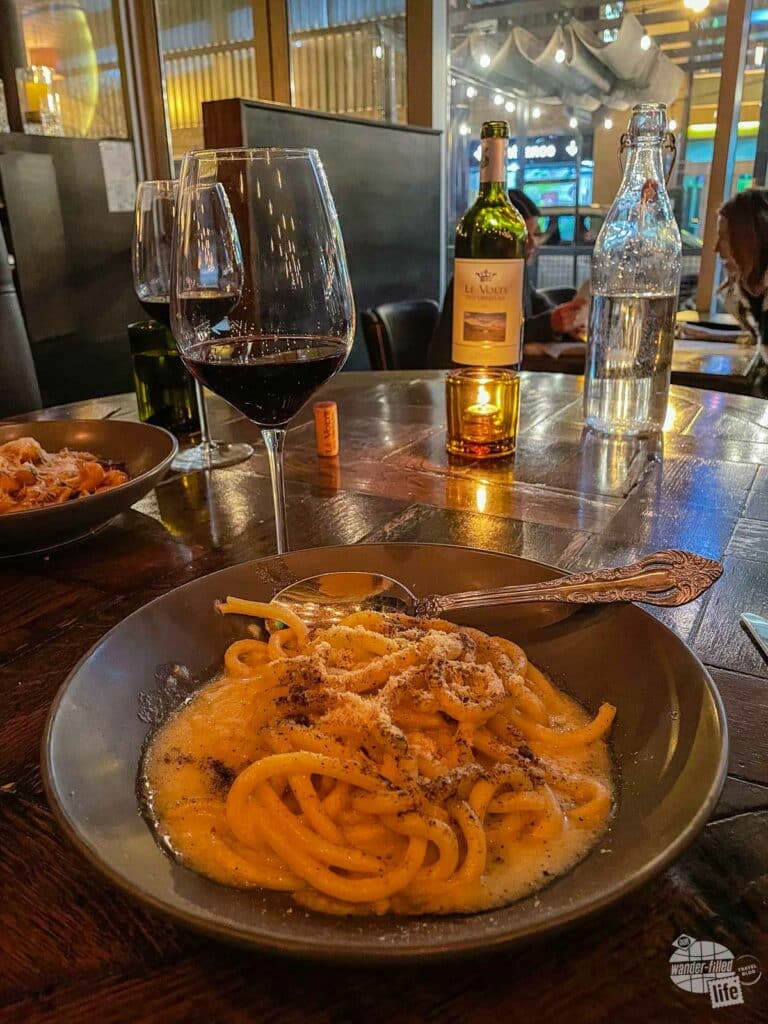
Unfortunately, that was really all we had time for since we had to check out of our hotel room right around lunch and head to the airport. We definitely are looking forward to going back to Chicago for the food if for nothing else!
Final Thoughts on Pullman National Historical Park
Pullman National Historical Park might not be the most popular attraction in Chicago, but if you’re interested in history, trains or national parks, you’re sure to enjoy it. Yes, it takes a little effort to get there, but it is well worth your time. And, whether you are traveling by car or public transportation, it actually is not that difficult to reach.
On our quest to visit all 400+ national park sites, we’ve definitely learned that the “small” sites can often surprise you. There is almost always an interesting aspect that you didn’t expect. And, for the most part, the National Park Service is doing a great job of highlighting those unique and investing facets of each site.
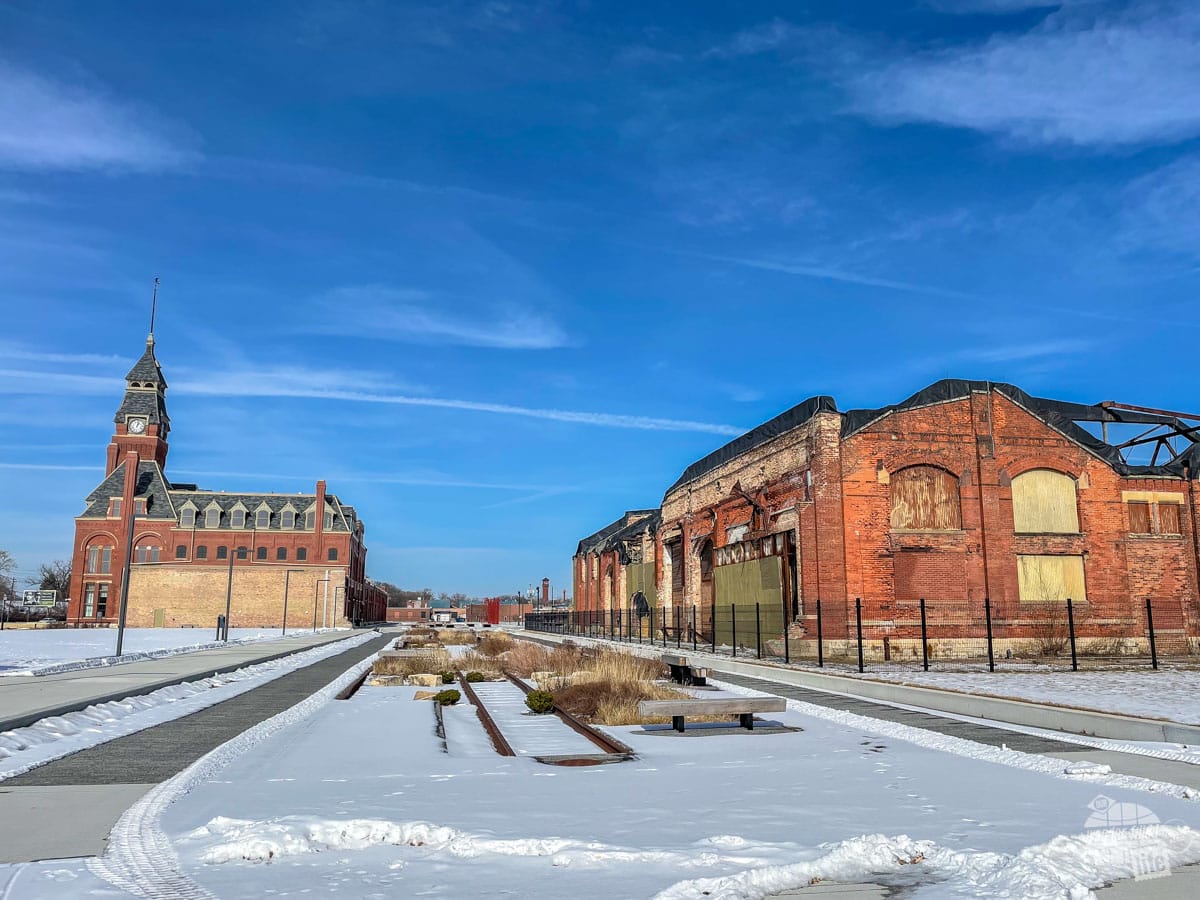
At Pullman National Historical Park, looking at the four main stories of the Pullman cars, the planned community, the strike and the Pullman porters really made the history of the site come alive. Before visiting, I suppose that I had heard of Pullman train cars but didn’t really understand the significant role this story played in the history and development of the United States.
Learning these small tidbits at various park sites allows us to understand and appreciate our country in a way that we never would have guessed when we first started our journey to all the parks.
Whether you are going to Chicago specifically to visit Pullman National Historical Park or just include it on a more in-depth visit to Chicago, it is certainly worth a visit.
Travel Resources
What do you use to find a flight?
We use Skyscanner to find deals on flights. Skyscanner has a great interface and compares tons of airlines for the best pricing and routing. That said, it does not always have every airline and some airlines will have better deals on their website. Still, Skyscanner is a great place to start.
Click here to search for a flight.
What do you use to find a hotel?
We typically stay at Hilton properties, so we use the Hilton website. You can find good Hilton Honors discounts or AAA discounts for a hotel there. We make great use of our free night certificates from our Hilton Honors American Express.
Click here to book a Hilton property.
If there are no Hilton properties available, we use TripAdvisor to read reviews and book the hotel. We find we can get the best price that way.
Click here to search for a hotel.
We recently partnered with Stay22 to add interactive maps to each of our destination posts. This will allow you to see a plethora of hotels and vacation rentals all in one responsive map of the area.
What if I need more space than I can get at a hotel?
We use Vrbo for the times when we have rented a cabin for a weekend getaway, like this cabin in Townsend, TN, or needed to rent a house for a large family vacation. We had a great experience with them in terms of refunding deposits when COVID hit and will continue to use them.
Click here to search for a vacation rental.
Who do you use for rental cars?
As a general rule, we book with Hertz for rental cars. We have had nothing but good experiences with them. Plus, we really like unlimited mileage and not worrying about crossing state lines. We have even rented from Hertz overseas in both Slovenia and Croatia.
Click here to book a rental car.
How about booking a cruise?
We have found some amazing prices for booking a cruise through Cruise Direct. We have saved a lot of money on our cruises compared to what we found elsewhere, making a last-minute Bahamas cruise even cheaper.
Click here to book a cruise.
What if I want to rent an RV?
We highly recommend Outdoorsy for RV rentals. We rented a camper van for a week to visit Rocky Mountain National Park for the elk rut and Custer State Park for the Buffalo Round-Up and had a blast. The program was easy to use and we really enjoyed the freedom of having a camper van for that trip.
Click here to rent an RV.
What do you use for booking tours?
We don’t often book tours. Typically, we like to do stuff on our own. That said, there are some experiences you can’t have any other way. So, when we do want to book a tour, we always check Viator first.
Click here to book a tour.
Do you use anything to get discounts on the road?
We make extensive use of both Good Sam and AAA on the road. Good Sam is normally regarded as a discount card for RVers at campgrounds and Camping World but anyone can use the 5 cents off a gallon at the pump at both Pilot and Flying J.
Click here to get a Good Sam membership.
We have had AAA as long as we have been married and it has more than paid for itself in discounts at hotels, aside from the peace of mind of having roadside assistance. Add in paper maps and the ability to get an international driver’s license and it is more than worth it for any traveler out there.
Click here to get a AAA membership.
